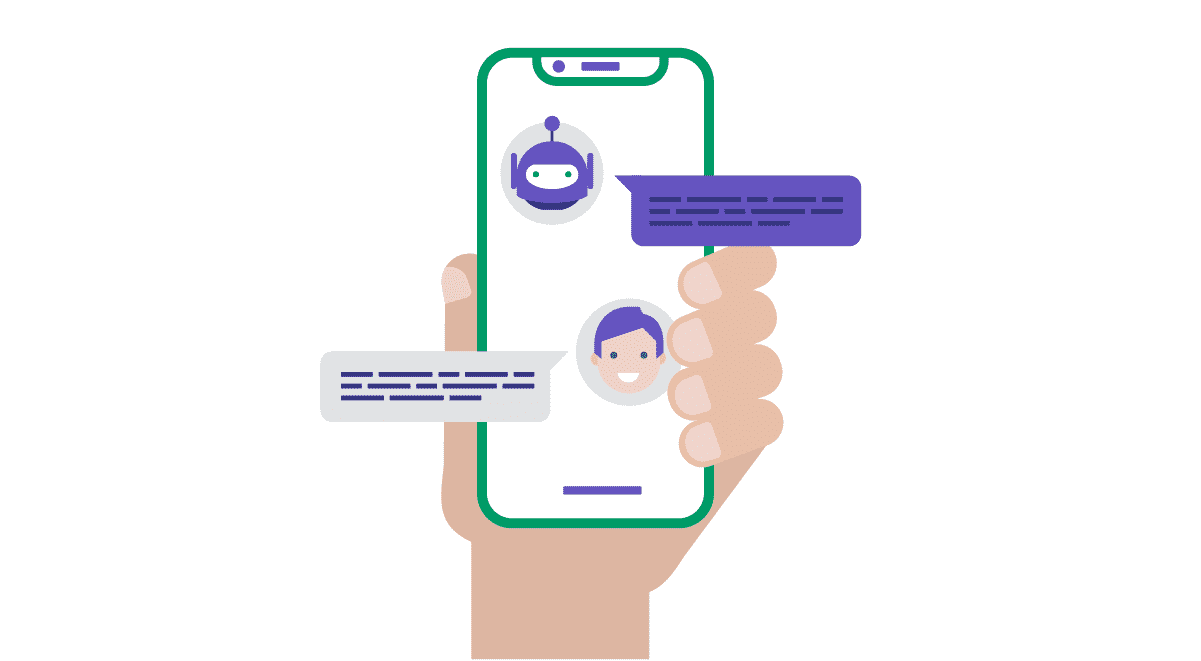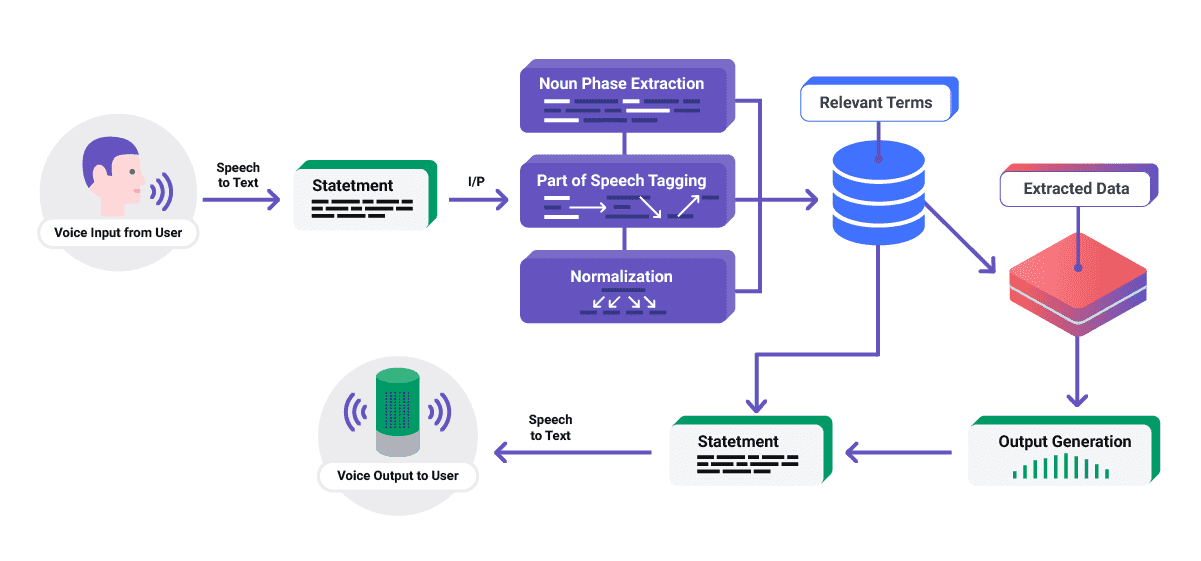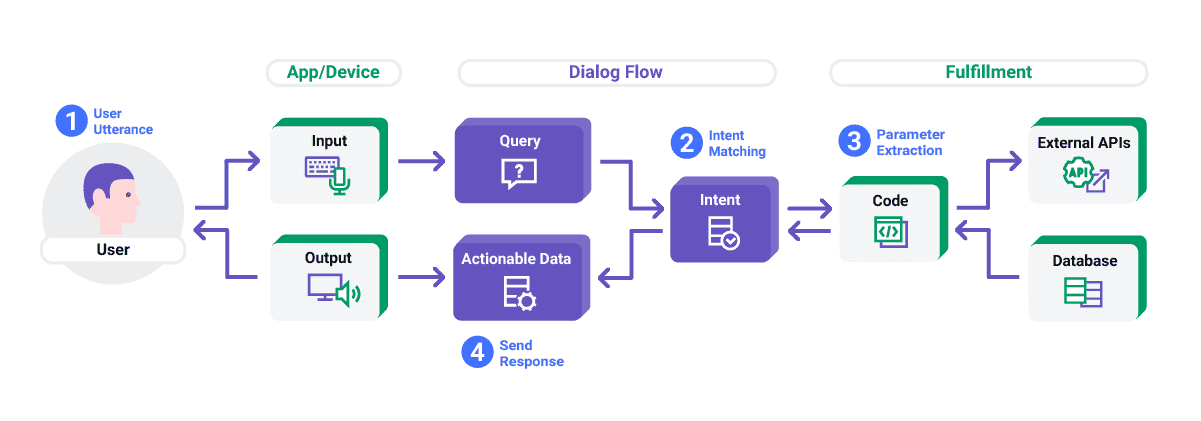In 2017, chatbots were predicted to all but take over the world. They were going to replace jobs and do so much more than how things actually panned out. While they never evolved quite enough to upend the human race, chatbots remain a useful technology that can be tailored to automate and simplify specific business needs.
With the aid of machine learning, chatbots are smarter than ever and faster than humans, enabling them to conquer tedious tasks that eat up time that could be better spent elsewhere. And they’re not difficult to develop or implement, either; not when it comes to Google’s Dialogflow, which can get your chatbot up and running quickly and easily.
Here’s how chatbots can have a positive impact on your business, and how Google’s Dialogflow can get a chatbot of your very own up and running quickly.

The Power of Chatbots
With popular devices like Amazon's Alexa and Echo, and smartphone personal assistants like Siri and Bixby, chatbots are alive and well in 2022. Despite a continuous desire for a human touch, twice as many consumers in 2019 compared to 2018 responded that they would knowingly engage with chatbots due to the belief that the technology was "very helpful."1 Consumers reported that they enjoyed the quick response times that chatbots can offer, and in Europe the adoption of chatbots has risen drastically.
Chatbots can offer more than just good customer service. They can power recruiting departments by assisting with candidate screening and perform background checks. They can schedule alarms, alerts, and meetings as personal assistants, and even pitch in with new employee onboarding and training by conducting meetings that are potentially more engaging than a simple slide deck.
The ideas for chatbots are quite honestly endless, depending on what your company’s needs are.
But back to the question of making chatbots more human. Is this possible? Well, the technology that enables chatbots to even understand human language is getting better. While it will likely take some time for chatbots to replace actual human beings in jobs and other functions, the technology can still be used for lower-level tasks and free employees up for work that's still being done better by a real person.
Natural Language Processing
Natural language processing, or NLP, is a subset of artificial intelligence that enables chatbots to comprehend human language. NLP functions thanks to machine learning, which is very similar to using statistical analysis to make predictions. By using large datasets, machines can be taught to accurately predict a potential outcome based on an inputted series of events or other data.
NLP applies to machines understanding both the written word and spoken language. The algorithms involved allow machines to attach grammatical labels such as noun or verb to different parts of speech, and thus derive meaning from the overall input.

Some NLP algorithms can even deal with grammatical errors in input, or the use of slang. This aids machines in overcoming basic language comprehension and inch closer to the idea of being considered "human".
NLP is a powerful and profitable branch of artificial intelligence; by 2025, it's expected to surpass $4.5 million USD.2 Since machine learning is dependent on the amount of information users put out into the internet and other repositories, and this is expected to continue, it's clear that NLP, machine learning, and artificial intelligence as a whole will only become sharper and more useful over time.
Creating a Chatbot with Dialogflow
While it's still unlikely that chatbots will take all of our jobs, they can still be incredibly beneficial for companies by improving customer service (thus potentially increasing conversions) and also lowering operational costs. By automating basic in-house or consumer-facing processes, employees can be freed up to do what they do best: add value to the company in the ways that only humans can through creativity and collaboration. And companies can quickly build a simple but powerful chatbot using Dialogflow.
Dialogflow is a Google-owned suite of tools that allows a user to create a conversational interface—a chatbot—and implement it in a series of technologies, from websites and text messaging to actual phone calls. Since it runs on Google infrastructure, it’s possible to scale your chatbot to millions of users. That same chatbot can be linked to various applications and data repositories using Cloud Functions or Firebase, which allows it to pull necessary information to reply to various customer queries.
You can also add a dedicated phone number to your chatbot to allow it to receive phone calls. This technology is based on Google’s research and work in phone connectivity, natural language understanding, speech recognition, speech synthesis, and more, allowing the chatbot to interact with a user over the phone easily.
By understanding and implementing the core concepts Dialogflow is built upon, users can easily define the types of queries they want their chatbot to be able to handle. Here’s a quick rundown of those concepts:

Invocations
Invocations kick off the conversational process, and can be as simple as saying “Hello!” These terms or phrases, defined by the developer and programmed into the Dialogflow console to be recognized as such, tell the Dialogflow agent, or chatbot, that a conversation has begun and it should be ready to receive further intentions from the user.
Intentions
Intentions are specific actions that users can take by invoking a defined term programmed into the Dialogflow console. One example is a user asking, “What’s today’s weather?” or querying where the closest Italian restaurant. So long as the chatbot has these items defined within its console, the agent will be able to identify the action it needs to take and follow it through to the correct response.
Intents should be focused and concentrate on the specific functionality they’re created for. This keeps the length of an invocation short, allowing the agent to retrieve the desired information in a shorter time frame.
User Says
These are usually listed as a series of questions or statements that should tell the conversational agent, or chatbot, to retrieve a specific piece of data. The more user says options, the easier it will be for a real person interacting with the chatbot to get exactly what it is they’re looking for, instead of needing to figure out the right way to ask their question.
Entities
These are the properties or information that the chatbot can retrieve depending on the user’s intent. Dialogflow already contains sets of predefined entities that can be used when constructing intent, making it simple to program the chatbot from the very beginning.
Fulfillment Request
This concept allows Dialogflow to send a call for the required entity to complete the user’s intent. The request is sent via web-hook to the appropriate entity to provide the information so that the chatbot can present the information to the user.
Responses
A response is the information or content the agent retrieves and delivers to the user’s initial intent. This is typically presented as textual content, or sometimes even rich content if the agent has been programmed with such. Textual content is often read aloud, depending on the nature of the chatbot.
Conclusion
Gartner predicts that chatbots will power 85% of all customer service interactions by the year 2020;3 the research firm even went so far as to say the average person will speak more with chatbots than with their spouse. Whether this touches on relationship advice or mobile phone use is another discussion, but consumer-facing businesses should take chatbots and NLP technology seriously.
Research conducted by Harvard Business Review states that it takes 24% of businesses 24 hours to respond to customer questions; what’s more worrisome is that 23% of businesses did not respond at all.4 There’s a short window to make a conversion, and rather than wasting manpower on frequently asked questions or hoping consumers will find their way to the answer on a website, companies can improve relationships by proactively bringing the answers and assistance directly to the customer.
Chatbots have the ability to cut resolution time from 38 hours to 5.4 minutes for what IBM referred to as Tier 1 inquiries (address changes, login issues, and other frequently asked questions).5 Think about the impact that this technology could have on your business!
If you’re ready to chat about chatbots and find out how they can have a positive impact on your bottom line, reach out to Softjourn today. We are experts when it comes to the implementation of artificial intelligence in the financial and entertainment sectors.
Whether it’s solving an internal issue, retaining or growing customer relationships, or increasing revenue, we stand by to bring your ideas to life using our technical acumen and creative solutions.








